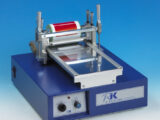Dow to build first “net-zero” ethylene, derivatives complex in Alberta
October 24, 2021Dow plans to build what it says will the petrochemical industry’s first net-zero carbon emissions ethylene and derivatives complex at the company’s Fort Saskatchewan, Alberta, site in Canada by 2030.
The project includes a world-scale, 1.8-million metric tons (mt)/year “net-zero carbon emissions” steam cracker, which is scheduled for start-up by 2027, according to an official with the US-based petrochemical giant.
Steam crackers break down light hydrocarbons such as ethane, propane, and light naphtha using heat and pressure to produce ethylene, one of the key building blocks for petrochemical production alongside propylene, benzene, and aromatics.
Construction of the steam cracker would be followed by a retrofit of existing assets to get the entire site to net-zero Scope 1 and Scope 2 CO2 emissions, Dow said. Scope 1 emissions are direct emissions from sources controlled by an organization. Scope 2 emissions are indirect emissions associated with the purchase of power, steam, heat, or cooling.
Dow’s Fort Saskatchewan investment includes an autothermal reformer to convert cracker off-gas into “circular hydrogen” for fuel in the process, replacing natural gas or other fossil fuels. CO2 from the ATR would be captured and transported to The Alberta Carbon Trunk Line (ACTL) for sequestration.
The project would decarbonize 20% of Dow’s worldwide ethylene capacity, and downstream investment at Fort Saskatchewan would grow polyethylene supply by 15%, the company said. The project would more than triple Dow’s ethylene and polyethylene capacity from its Fort Saskatchewan site.
“This investment builds on Dow’s strong leadership position and allows us to meet the increasing needs of customers and brand owners seeking to lower the carbon footprint of their products,” CEO Jim Fitterling said in a statement accompanying the announcement. “Our advantaged position and disciplined approach to capital investment makes us well positioned to lead the industry in decarbonizing, growing and accelerating Dow’s path toward carbon neutrality.”
Dow announced the project at its 6 October investor day, where it also set a target to generate $3 billion/year of additional EBITDA over the next decade while keeping capital expenditures at or below depreciation and amortization levels of roughly $2.9 billion/year across the cycle. Roughly $1 billion of the EBITDA growth would come from the Fort Saskatchewan investment, it said.
Additional CO2 reduction plans
Dow also announced broader carbon-reduction actions at the investor day, including additional renewable energy agreements in the Americas and Europe, and plans to provide initial supplies of fully circular polymers to customers starting in 2022.
The Fort Saskatchewan site was selected because of its competitive energy and feedstock position and access to available third-party CO2 infrastructure.
“Alberta’s support for circular hydrogen and CO2 infrastructure are essential to enabling us to develop this net-zero carbon emissions manufacturing facility,” Fitterling said in the statement announcing the ethylene complex.
The growth in the CO2 infrastructure in Alberta was also illustrated by Air Products in June announcing plans to build a C$1.3-billion ($1.1 billion) net-zero “blue” hydrogen plant in Edmonton, Alberta, that is expected to be onstream in 2024, the industrial gas giant said. The CO2 from the site will also be permanently sequestered by leveraging the ACTL, it said. Fort Saskatchewan is less than 30 kilometers northeast of Edmonton.
Fitterling said federal support also helped Dow choose the site. “Canada’s support for this type of investment can serve as a model for how government investment can encourage the development and accelerate adoption of emissions-avoiding technologies and solutions,” he said.
A first federal budget in two years introduced tax incentives for investments in carbon capture, utilization, and storage (CCUS) as well as equipment for pumped storage hydro, renewable fuel production, hydrogen, and some forms of wave, tidal, and geothermal energy projects.
The Canadian government’s existing Net Zero Accelerator initiative, which can be used for green hydrogen, supports projects that will allow Canada to reduce its GHG emissions. The accelerator, which was launched in December 2020, now is backed by C$8 billion ($6.34 billion) in funding.
Meanwhile, the results of the 20 September federal election promise a continued focus from the government on climate change, net-zero targets, and cutting the country’s GHG emissions. Prime Minister Justin Trudeau in April pledged to reduce Canada’s emissions by 40% to 45% compared with 2005 levels by 2030 before reaching net zero in 2050.
